
|
"Splattermite" is the informal name that cavers use to describe a peculiar
type of stalagmite featuring platy, upright protusions. These protusions
arc around the central axis of a splattermite, fed by rings of drip splash that rebound from the formation's growing tip. They may vary from small delicate fingers an inch or less across as in photos 3 and 8 or massive structures as in photos 1, 2, and 4.
Splattermites tend to form within tall cave chambers, where ceiling drops build up lots of speed and "bounce potential." But bounce, alone, won't build a splattermite--the splash droplets must also precipitate calcite very rapidly, before streaming downward along the sides of the formation. Caves where they are found tend to have large passages or entrances nearby that afford good air circulation. Splattermites are most frequently represented in the tropics, where densely vegetated soils charge cave drip waters with exceptionally high concentrations of carbon dioxide. This carbon dioxide is rapidly released as drip water enters the cave atmosphere. Calcite deposition is, likewise, prompt. The "stone flower" of the fourth photo, which lends its Mayan name to the Loltun Room of Belize's Chiquibul Cave, is the product of such rapid deposition beneath a tropical rainforest. In addition to the the aforementioned type of splattermite, which we might call the "palm leaf" variety and depicted in the upper photos, there is a second type best known from a couple show caves in France, and decidely not tropical: the Aven Orgnac and the Aven Armand. This variety has the appearance of a stack of plates poorly stacked and offset from each other (photos 5-7). French speleologists termed the name "Piles des Assietes" for this phenomenon. The offsets may be irregular and random or stairstepped on one side of a stalagmite (photo 7), with the largest on the bottom as might be expected from growth fed by spatter off a floor. |
![]()
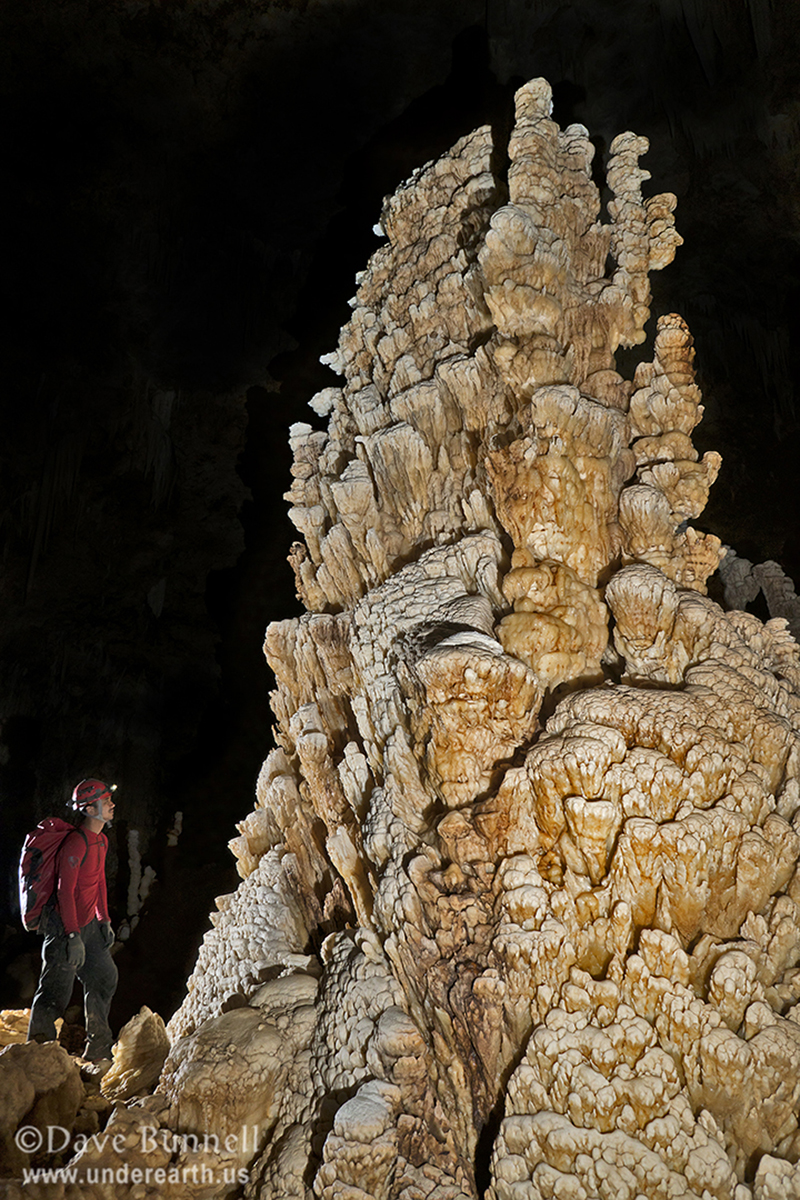
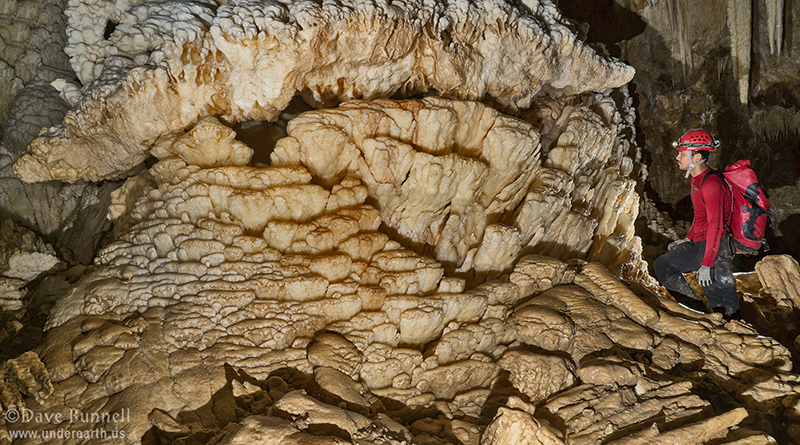
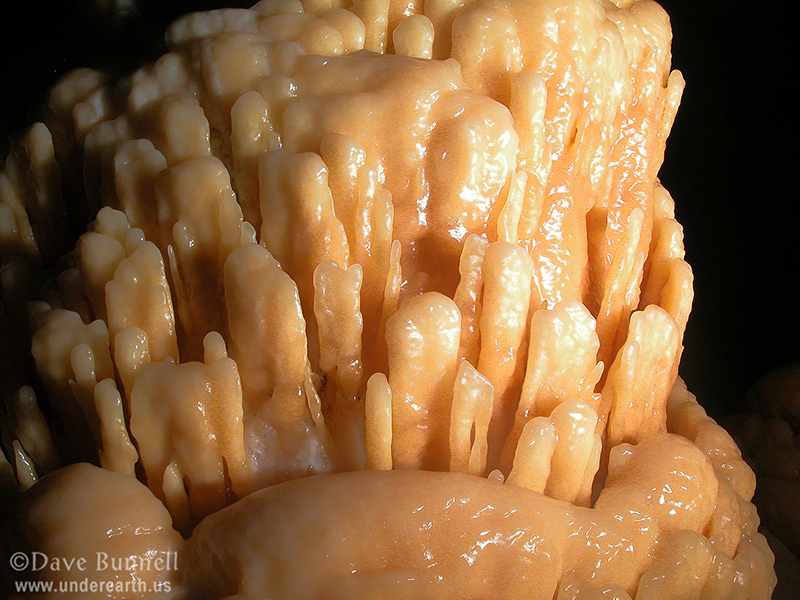
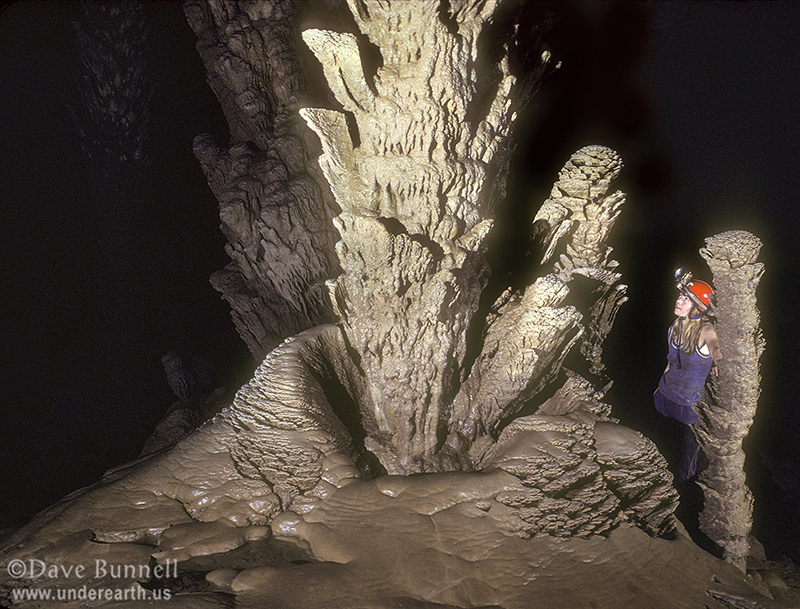
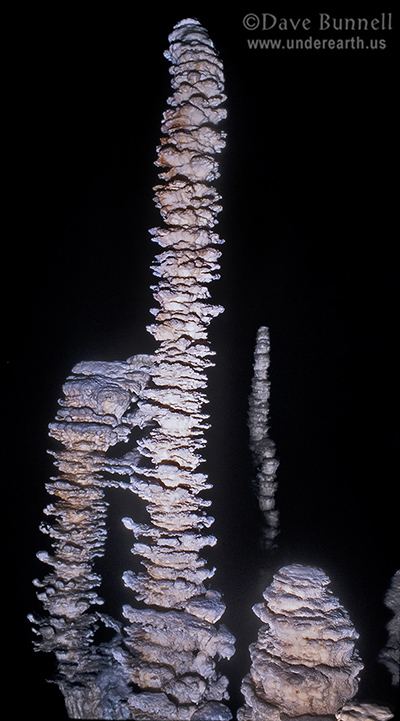

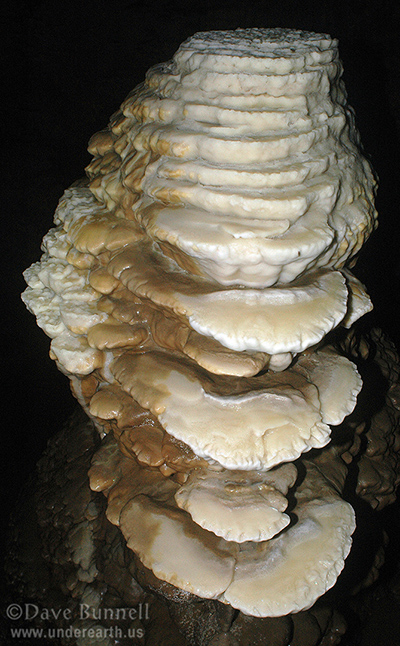
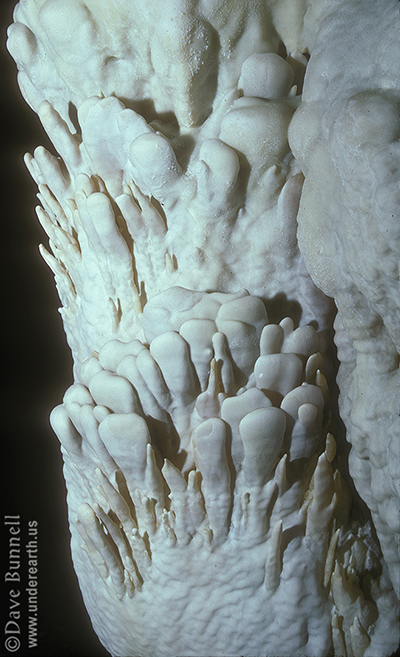
![]()
| Back to: | |
 |
Created: November 17, 1995 Last Updated: March 31, 2020 Authors: Djuna Bewley and Dave Bunnell |